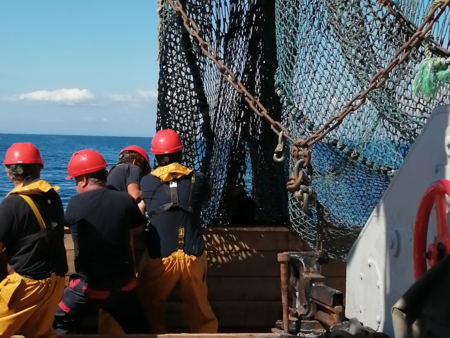TELOMER (2022-2025)
Coordination Ifremer | Type de projet | Financeur | Durée du projet | Lien |
F. Akcha (CCEM) | National | EC2CO | 2022-2025 |
TELOMER is coordinated by the Ifremer CCEM research unit in Nantes (Dr F. Akcha). It is realized thanks to the collaboration of CCEM with LPTC-UMR EPOC in Bordeaux and UMR Hydrosciences in Montpellier. The project will start in Mai 2022 for 3 years. It received 84000€ from EC2CO and funds for a post-doctorate contract by Ifremer.
This project is a continuation of those conducted over the las decade on the toxicity of pesticides in marine organisms and in particular in oysters. With the aim to pursue the development of genotoxicity biomarkers, it appeared valuable to investigate the impact of chemical pollution on a part of the chromosome structure, the telomeres, poorly investigated until now in ecotoxicology. In humans, telomere length (TL) has been proposed as a potential biomarker of cellular aging and cumulative stress exposure, as well as a prognostic indicator for risk of late-life diseases (Von Zglinicki, 2002). In the last decades, several epidemiology and toxicology studies have highlighted a disruption of telomere dynamics during exposure to oxidative stress as well as physical and chemical agents (Barnes et al., 2018, Moller et al. 2018). Recently, promising data were acquired in fish exposed to chemical contamination in the field (Akcha et al., 2021, Molbert et al., 2021).
In this context, TELOMER aims to study by a field (Bourgneuf Bay) and an experimental approach (experimental facilities from Ifremer Bouin) the impact of pesticide exposure on telomeres (relative and absolute telomere length, attrition rate, telomerase activity) in a non-targeted marine species, the Pacific oyster (Crassostrea gigas). Telomeres play a key role in maintaining genomic stability by protecting the coding sequence of chromosome ends A link will be investigated with other genome damages/changes (genotoxic lesions, DNA methylation level) and some physiological impairments (growth, reproduction, survival). During the experimental approach, the analysis of the endo and xeno-metabolome will allow a better knowledge of the impact of pesticides on oyster metabolism. This project could lead to the proposal of a novel biomarker of chemical stress exposure and longevity in oyster. The analysis of oyster metabolome is expected to provide information on the toxicity mechanisms of hydrophilic pesticides. It will also discuss on the possibility of using this omics tool to identify markers of hydrophilic pesticide exposure (xéno-métabolome) that are known to be not bioaccumulabled in biota.
Akcha F, Cahuc C, Rouxel J, Munschy C, Aminot Y, Chouvelon T, Mahe K, Budzinski H, Mauffret A. (2021). Development in the European flounder (Platichthys flesus) of a q-PCR assay for the measurement of telomere length, a potential biomarker of pollutant effects for biomonitoring studies. Mar Pollut Bull. 170: 112610. DOI: 10.1016/j.marpolbul.2021.112610.
Barnes R. P., Fouquerel E., Opresko P. L. (2019). The impact of oxidative DNA damage and stress on telomere homeostasis. Mech Ageing Dev 177: 37-45, DOI: 10.1016/j.mad.2018.03.013.
Molbert N, Angelier F, Alliot F, Ribout C, Goutte A. (2021). Fish from urban rivers and with high pollutant levels have shorter telomeres. Biol. Lett. 17: 20200819. DOI: 10.1098/rsbl.2020.0819
Møller P., Wils R. S., Jensen D. M., Andersen M. H. G., Roursgaard M. (2018). Telomere dynamics and cellular senescence: an emerging field in environmental and occupational toxicology. Crit Rev Toxicol 48: 767-788, DOI: 10.1080/10408444.2018.1538201.
Von Zglinicki T. (2002). Oxidative stress shortens telomeres. Trends Biochem Sci 27: 339-344, DOI: 10.1016/s0968-0004(02)02110-2.
For more information, please contact: Farida.Akcha@ifremer.fr
Personnels Ifremer | Les partenaires |
Equipe CCEM | LPTC-UMR EPOC in Bordeaux and UMR Hydrosciences in Montpellier |


